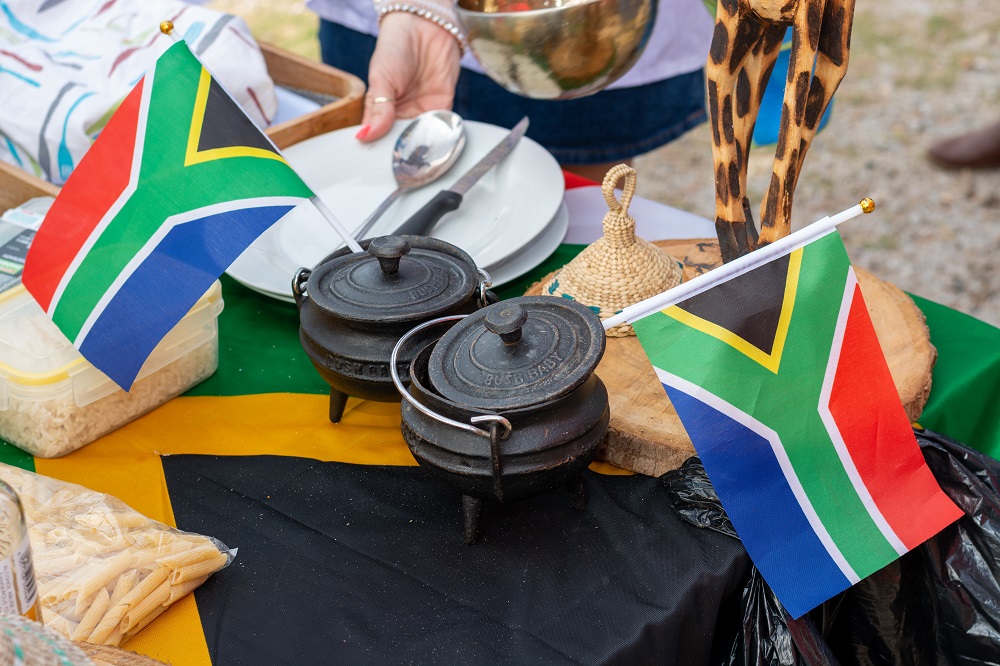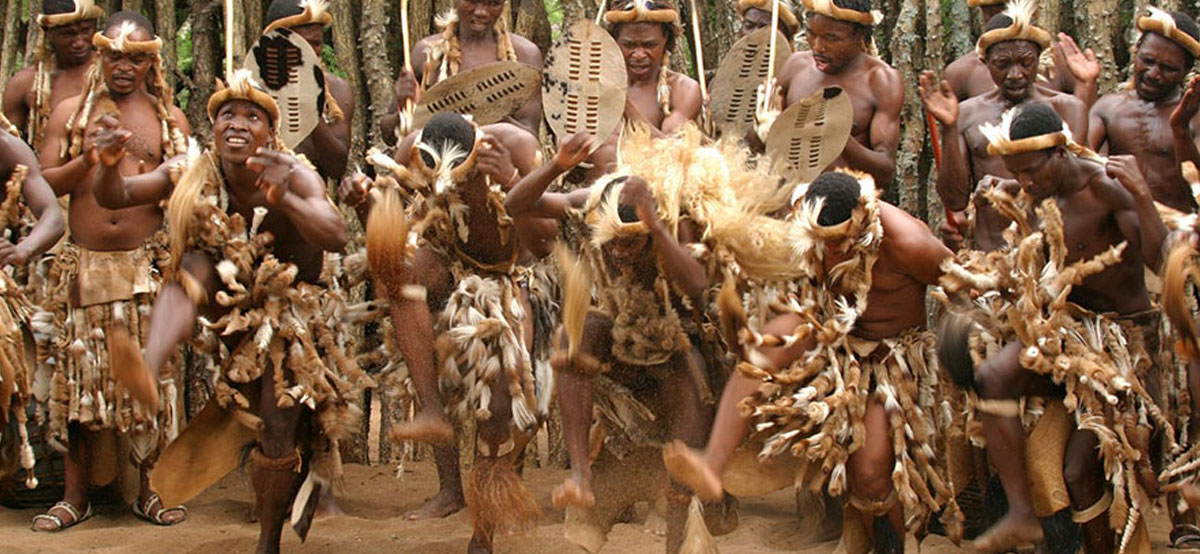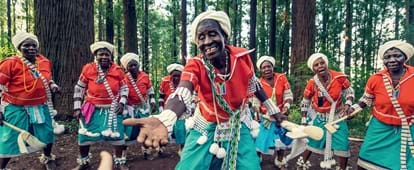The Ultimate Guide To South African Culture Today
The Ultimate Guide To South African Culture Today
Blog Article
Some Known Questions About South African Culture Today.
Table of ContentsThe Basic Principles Of South African Culture Today South African Culture Today Fundamentals ExplainedSouth African Culture Today Things To Know Before You Get This6 Easy Facts About South African Culture Today ExplainedGetting The South African Culture Today To WorkNot known Factual Statements About South African Culture Today
This follows with singing and drum beating. The groom and bride after that fulfill with the senior citizens and speak about the relevance of their union. An issue of relevance in Zambian towns is the diing of enjoyed ones. All participants of the town put cash, time and effort together for the funeral of the deceased.Music and dancing is an extremely important facet of the Zambian culture. The numerous tribal systems have their own dancing forms; nonetheless, makishi is typical among all tribes.
The Basic Principles Of South African Culture Today
When it pertains to music, drums are made use of the most, with a range of drumming events. In Zambia, bulk of the individuals are Christian; Protestant and Roman Catholic. There are tiny teams of Muslims and Hindus, with the rest adhering to local native tribal ideas.

South African heritage and culture is exceptionally diverse, and includes lots of different teams of people who each have their own traditions and ideas. Having such a diversity of individuals and cultures is what makes South Africa so unique. In real sense of the expression, we are a rainbow nation.
Making it the 7th on the listing of nations with the most Portuguese people in it outside of Portugal. Portuguese is not only a society, but it is likewise a language and a nationality. Portuguese people stem from the nation of Portugal in Europe, nevertheless, due to Portugal (like several other nations in Europe) exploring the world and overcoming other countries throughout the 15th 20th centuries, South Africa has what we call Portuguese South African's living in it.
Rumored Buzz on South African Culture Today
Among the popular functions of the topography is a plateau that covers practically two thirds of the center of the country. The plateau facility climbs towards the southeast, where it culminates in the Drakensberg array, component of a cliff that divides the plateau from the seaside locations. The Drakensburg consists of Sparkling wine Castle, the highest possible optimal in the nation.
The area north of the Witwatersrand, called the bushveld, inclines downward from eastern to west toward the Limpopo River, which develops the international boundary. The western area of the plateau, the middleveld, additionally comes down in the direction of the west and varies in elevation between the highveld and bushveld. Between the Drakensburg and the eastern and southerly coast, the land comes down to the sea.
Nearer the coastline there is a low-lying plain called the eastern lowveld. Southwest of the plateau the country becomes progressively more dry, paving the way to the hostile desert of the Great Karroo, bordered on the east by the reduced, much better watered plateau of the Little Karroo. Dividing the dry southerly inside from the sandy littoral of the southern coastline and West Cape is an additional variety, the Langeberg.
All about South African Culture Today
The nation's racially, ethnically, and politically split history has actually produced nationwide and subnational symbols that still work as symbols of the nation, and others symbols that are accepted just by specific teams. The monuments to white inhabitant occupation and political supremacy, such as the Afrikaner Voortrekker ("leader") Monument in Pretoria and the Rhodes Monolith honoring the British colonial empire building contractor and Cape prime priest Cecil Rhodes, remain sectarian signs.
The initial modern citizens were the San ("bushman") hunter-gatherers and the Khoi ("Hottentot") peoples, that rounded up livestock (South African culture today). The pop over to this site San might have existed for countless years and left proof of their presence in countless old cave paintings ("rock art"). Bantu-speaking clans that were the forefathers of the Nguni (today's amaZulu, amaXhosa, amaSwazi, and vaTsonga peoples) and Tswana-Sotho language click here for info groups (today's Batswana and Southern and Northern Basotho) moved below east Africa as early as the fifteenth century

Both former republics of the Orange Free State and Transvaal (South African Republic) were established by Afrikaner inhabitants that defeated and dispossessed the Basotho and Batswana. Lesotho would have been forcibly incorporated right into the Orange Free State without the extension of British defense in 1869. The utmost unification of the country arised from the South African Battle (18991902) in between the British and the 2 Afrikaner republics, which reduced the country to mess up at the beginning of the twentieth century.
Afrikaners historically considered themselves the only real South Africans and, while approving full citizenship to all locals of European descent, denied that status to individuals of shade up until the democratic change of 1994. British South Africans preserve a feeling of cultural and social link to Great Britain without damaging their identification as South Africans.
About South African Culture Today
The diversity and fragmentation within ethnic groups and the balance of stress between those teams during the twentieth century protected against interethnic civil dispute. While intergroup stress over resources, privileges, and political dominance stay, those problems are as likely to match Zulu against Zulu as Zulu against Xhosa or African versus Afrikaner.
From colonial India, British merchants and managers brought the curved metal decorative roof coverings and slender shoelace job pillars that still typify the terraces of homes in the areas and cities throughout the nation. Residences of worship add a crucial architectural element even in the tiniest communities. In enhancement to the skyrocketing steeples and timeless stonework of Afrikaans Dutch Reformed churches, Anglican churches, synagogues, mosques, and Hindu shrines supply range to the spiritual architectural scene.

Slaughtering and the brewing of conventional cereal beer are vital in protecting the involvement and goodwill of the ancestors who are considered the guardians of good luck, success, and health. Indian areas preserve their native culinary practices and use them on Islamic and Hindu routine and ceremonial occasions. Afrikaners and Coloured people collect at weekends and special celebrations at multifamily bbqs called braais, where neighborhood bonds are enhanced.
Because this was the primary financial business of both black Africans and white colonists, problem in between those groups fixated the property of grazing land and animals. In 1867, the largest ruby down payments worldwide were discovered at Kimberley in the west main location. The wealth from those areas assisted finance the exploitation of the best gold reef on the planet, which was uncovered on the Witwatersrand in 1886.
Unknown Facts About South African Culture Today
This caused misunderstandings and purposeful misrepresentation in the dealings of white settlers and federal government officials with African chiefs throughout the colonial period (South this hyperlink African culture today). In the facility of African reserves, some elements of public and chiefly "tribal depend on" land period were preserved, and even in white country locations, forms of common period were still practiced in areas with African neighborhoods
After the autonomous transformation of 1994, programs for land restitution, redistribution, and reform were instituted, yet progress has been sluggish. The white minority still regulates eighty percent of the land. Following agricultural land invasions in Zimbabwe, the Department of Land Affairs has actually vowed to speed up land redistribution.
Report this page